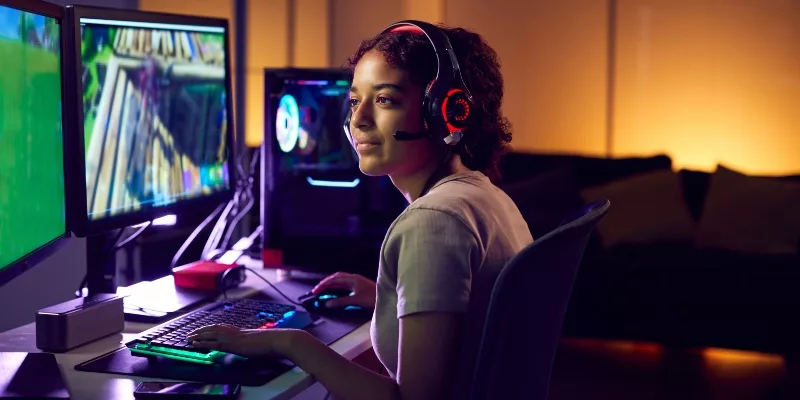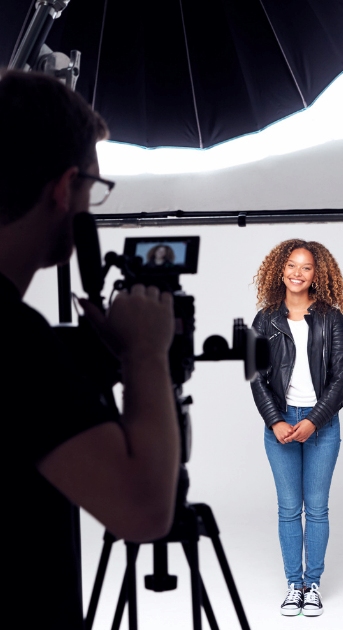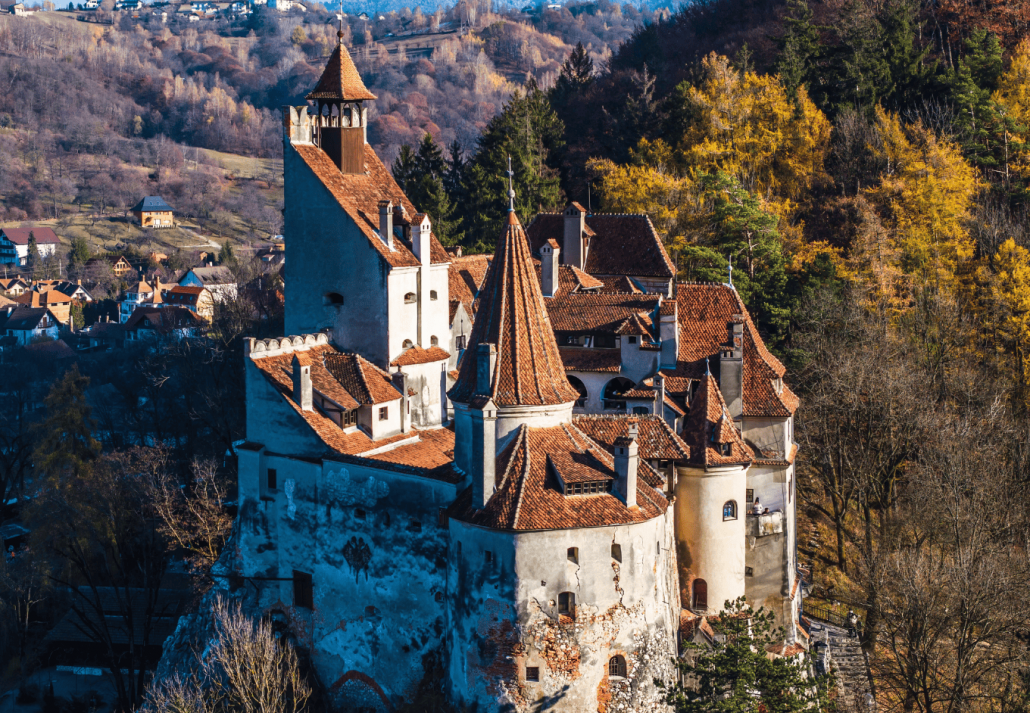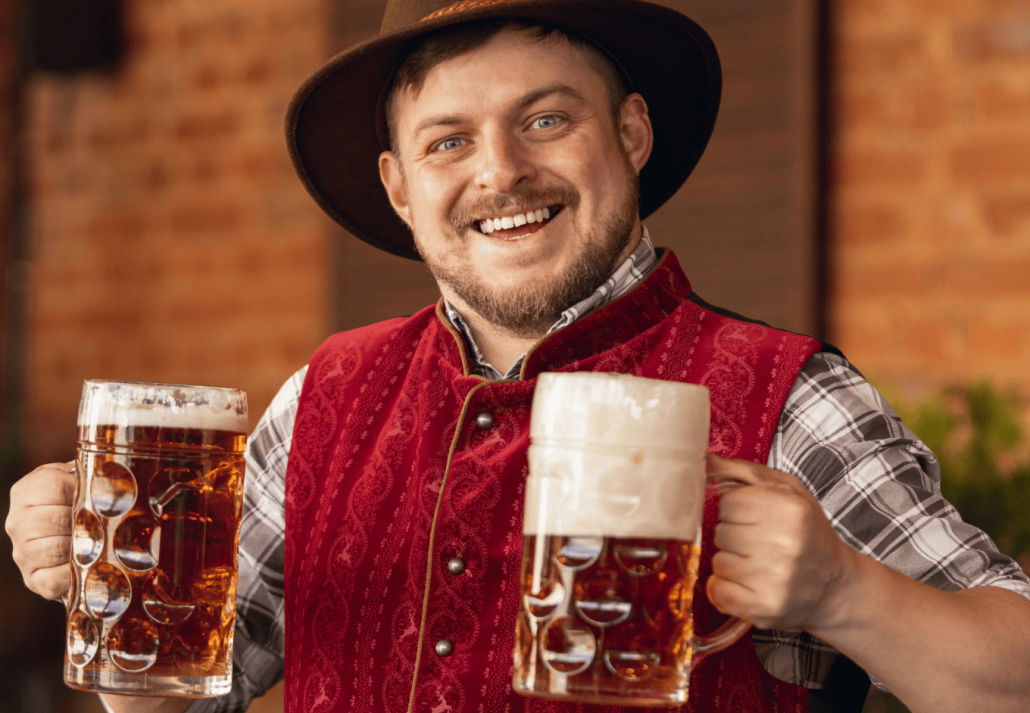Digital Marketing for Gaming Industry: Best Practices & Campaigns
Digital marketing holds immense potential for enhancing brand awareness among gaming companies. That is primarily due to its ability to place these companies directly in front of a vast audience, enabling them to reach a wider demographic. Additionally, effective...

Digital marketing holds immense potential for enhancing brand awareness among gaming companies. That is primarily due to its ability to place these companies directly in front of a vast audience, enabling them to reach a wider demographic. Additionally, effective digital marketing campaigns for video games can position gaming companies as industry experts, further solidifying their credibility and authority within the gaming community.
First Thing First: Golden Era of the Video Game Industry
Let’s begin with a widely recognized fact: The video game industry is experiencing remarkable growth and has become one of the fastest-growing sectors globally. According to statistics, the revenue generated by the video games market will reach an impressive US$384.90 billion in 2023.
Furthermore, experts predict that this revenue will continue to expand at an annual growth rate of 7.89% (CAGR 2023-2027), leading to a projected market volume of US$521.60 billion by 2027.
Given this situation, it’s noteworthy to recognize that the gaming industry benefits from robust marketing efforts. Contrary to popular belief, digital marketing plays a pivotal role in amplifying the appeal and recognition of video games, effectively serving as a magical wand that enhances their reputation.
Digital Marketing in Gaming Industry
“I said something nice, not something expensive.”
— Trevor Phillips
The gaming industry and marketers go hand in hand, creating a dynamic synergy where both thrive. It can be aptly described as a genuine “playground” for marketers, offering endless opportunities for engagement, promotion, and success.
The industry is also a vast and diverse market, with over 2.5 billion gamers worldwide – with different interests, demographics, and spending habits. This global reach presents an opportunity for marketers to reach a wide range of consumers and their advantage by tailoring their marketing campaigns to specific segments of the gaming population.
Gamers are highly engaged and enthusiastic about their hobby, often investing money in games and gaming-related products. This level of engagement makes gamers a valuable target audience for marketers, as they are receptive to relevant offers and promotions.
And yes, digital marketing finds a natural home within the gaming industry, leveraging its constant innovation to forge new connections with gamers. As technologies like virtual reality & augmented reality gain traction, marketers have unprecedented opportunities to captivate gamers with immersive experiences, making digital marketing an integral part of this ever-evolving landscape.
Now that we’ve explored the significance of digital marketing in the gaming industry, let’s delve into the realm of best marketing practices within this dynamic field.
Using Social Media Platforms: It Has the Power!
“The only thing that can defeat power, is more power.”
– Resident Evil: Umbrella Chronicles
Another fact: Gamers heavily rely on social media platforms (except for Twitch) to connect with fellow gamers, share gaming news, and discover influencers, mobile gamers, gaming platforms, etc. So, social media marketing is a good idea for professionals seeking to reach a large and engaged audience of potential players.
Creating trailers & first looks, gameplay videos, live streams, and blog posts to share on social media seems a good idea. Such content builds excitement and keeps gamers (a.k.a. target audience) engaged with current and upcoming games.
Before proceeding further, it is critical to utilize the potential of social media platforms for precise targeting of specific demographics. For instance, let’s consider a mobile gaming app that primarily appeals to casual gamers. In this case, the marketing strategy can be tailored to focus on smartphone users in the age range of 25-40 who have expressed an interest in casual gaming genres. By utilizing social media platforms to target this specific demographic, the app can maximize its reach and engagement among the intended audience.
Additionally, it is essential to utilize social media targeting capabilities to reach gamers with specific interests. For instance, imagine a gaming headset company aiming to capture the attention of PC gamers who have a preference for first-person shooter games. By leveraging social media targeting, the company can tailor its marketing efforts to specifically reach this niche audience, effectively connecting with gamers who are most likely to be interested in their products.
As a marketing strategy in the gaming industry, it is crucial to engage with gamers through active participation in conversations, prompt responses to comments, and addressing queries. These interactions not only help build relationships but also provide valuable feedback, identify potential issues, and generate positive word-of-mouth promotion.
Additionally, by capitalizing on the flourishing esports industry, brands can seize the opportunity to sponsor esports teams. By doing so, they can expose their logos and products to a vast audience of passionate gamers, effectively increasing brand visibility and engagement within the gaming community.
Partnering with Gaming Influencers
“I don’t need a weapon; my friends are my power!”
– Kingdom Hearts
Collaborating with gaming influencers is a highly effective strategy to promote video games, given their existing engaged audience. These influencers. (such as Dr. Disrespect, PewDiePie, Markiplier, Jacksepticeye, Ninja, SSSniperWolf, VanossGaming, and so on) play a crucial role in generating excitement & awareness for new games, attracting new players, and fostering meaningful relationships with the ecosystem. Consider the impact of renowned Twitch streamers, who may boast over 100,000 dedicated followers, providing unparalleled exposure for your digital marketing efforts.
By showcasing a game and sharing their experience, influencers create a ripple effect that motivates their audience to explore the game themselves. They can also attract new players directly to the game and expand the player base.
What’s more, gaming influencers often have networks and connections within the industry. Through partnerships and collaborations with other influencers, they can extend their reach even further. Cross-promotion between influencers allows for mutual exposure, leveraging each influencer’s unique audience and expanding your game’s visibility across multiple channels.
Paid Advertising and Sponsorship
“It’s dangerous to go alone, take this!”
– The Legend of Zelda
And… Do not forget to take the power of paid advertising.
Undoubtedly, running paid ads is an excellent marketing strategy in the gaming industry. It enables marketers to exactly target their desired audience based on demographics, interests, and behaviors, maximizing visibility and exposure.
Strategic ad placements on various gaming platforms help generate impressions and capture the attention of potential players who may not have been aware of the game previously. That expanded brand awareness serves as a strong foundation for attracting more players.
Moreover, paid advertising – used by many digital marketing agencies for gaming companies for years – offers cost-effective results by allowing marketers to set budgets and achieve a high return on investment (ROI) through targeted audience reach and conversion. The availability of tracking and analytics tools further enhances the ability to measure ad effectiveness and refine campaigns for improved results over time.
Sponsoring esports teams has shown to be a highly effective marketing technique for reaching out to and engaging the gaming community. Esports has grown in popularity around the world, attracting a large number of fans both online and offline. These esports teams frequently have ardent fan communities that enthusiastically support their favorite players and teams. This affiliation not only promotes trust and credibility but also fosters a good brand image among gamers.
Furthermore, esports sponsorships provide unique chances to actively engage with the gaming community via a variety of media. Sponsored content, joint initiatives on social media platforms, community events, and special promotions are examples of these.
Best Video Game Marketing & Advertising Campaigns
Here is the best part!
From the moment PlayStation was released and Mario made its debut, the world of video games bore witness to extraordinary game marketing. However, in this section, we will explore the captivating realm of recent game marketing that has garnered positive reactions.
God of War: Kratos Takes His Leviathan Axe to Traditional Marketing
“Hey Boy! Watch out!”
Isn’t it one of the most iconic phrases to date? Every member of the gaming industry is well aware of how the mighty Kratos addresses his son. Sony, however, aimed to elevate the popularity of this father-son duo even further leading up to the release of their highly anticipated game. As part of their marketing campaign for God of War Ragnarök, Sony unveiled a colossal replica of the Leviathan Axe, a prominent weapon from the game, in the heart of Central London on January 30, 2023. This attention-grabbing spectacle undoubtedly captured the imagination of both fans and passersby, generating buzz and anticipation for the upcoming sequel.
While it may not possess the same mystical properties found within the realm of video games, the physical replica of the axe was truly awe-inspiring. Standing at an impressive height of 10 feet and weighing a staggering 1,000 pounds, the axe was constructed using a combination of fiberglass and steel. Sony chose to unveil this magnificent creation to the world, announcing the news through their official Twitter account in the following manner:
After that, thousands of people came to see it and of course, the Leviathan axe sparked a great excitement for the upcoming game. And, yes, it was a great digital marketing example for the video game industry.
If you're considering seeing it in person, experts speculate the axe will be gone by Tuesday evening.
(And please do not attempt to lift the axe, Kratos will be angry) pic.twitter.com/AJKcGDyMra
In addition to the monumental axe display, Sony went all out in building anticipation for the game by releasing a multitude of trailers and captivating footage across various social media platforms. The company took it a step further by crafting interactive experiences on platforms like Twitter and Instagram, providing fans with innovative ways to engage with the game. These immersive experiences allowed fans to delve deeper into the world of God of War Ragnarök, fostering a heightened level of excitement and interaction within the gaming community.
Sony made sure to bring its A-game to the gaming industry’s marketing arena as well. The company engaged in collaborations with several prominent brands, including the likes of KFC, in order to expand its reach and appeal to a broader audience. It goes without saying that the release of God of War Ragnarök turned out to be one of the standout events of the year, further cementing Sony’s position as a major player in the industry.
Horizon Forbidden West: Expanding the World of Aloy through Digital Marketing
The digital marketing campaign for the well-known Horizon Forbidden West has achieved remarkable success by employing several key strategies. Firstly, the campaign capitalized on visually stunning trailers and captivating gameplay footage to showcase the game’s impressive graphics, immersive gameplay, and captivating storyline. These top-notch assets captured the attention of fans and generated an enormous amount of excitement for the forthcoming release.
In a similar vein to their approach with Ragnarök, Sony delivered exclusive behind-the-scenes content, developer insights, and exclusive sneak peeks for Horizon Forbidden West, fostering a passionate and dedicated player community. By continuously engaging and interacting with the audience, Sony nurtured an even deeper sense of anticipation and excitement for the game.
The company also collaborated with influential gaming personalities and content creators further amplified the campaign’s reach and bolstered its credibility. These partnerships allowed for the sharing of personal experiences and captivating gameplay footage, effectively building excitement and garnering trust among their respective followers.
In addition, the marketers behind this remarkable success story made a conscious effort to embrace inclusivity and diversity by embracing the new world of players.
Happy #Pride, from all of us at Guerrilla!
We are proud to be telling Aloy's story in a way that's authentic to her character and thank you all for joining us on her journey.
We wish all our fans in the LGBTQIA+ community a safe and fun-filled Pride! pic.twitter.com/y858QJjADq
The Callisto Protocol: The Great Survivor of Games Marketing
Striking Distance Studios’ survival horror game, The Callisto Protocol, demonstrated that it is indeed possible to promote a video game within a dark and catastrophic atmosphere!
The marketing mind behind the Krafton-published game has leveraged the full power of social media by sharing news, updates, behind-the-scenes content, and high-quality trailers and sneak peeks. By maintaining a strong online presence, they have effectively kept the game at the forefront of players’ minds, generating significant buzz and anticipation.
The marketing team behind The Callisto Protocol also formed partnerships with influential gaming personalities, collaborating on regular live streams.
How about You?
The strategies we listed above have undoubtedly contributed to the game’s success and heightened its visibility in the competitive marketing & industry landscape.
However, implementing these digital marketing strategies in real-life scenarios is another story. To make this phase smooth check out the digital marketing agencies for the entertainment industry.

 Tfoso
Tfoso 

































